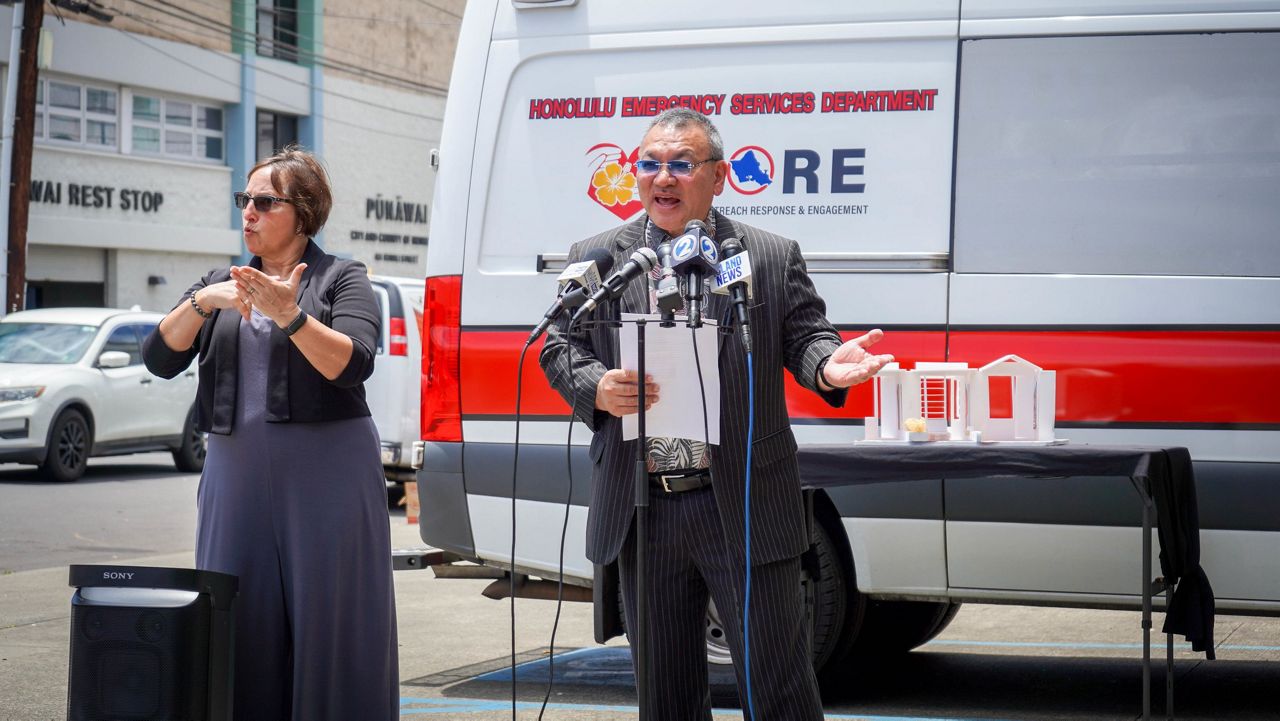Oahu’s homeless population increased 12% over the last year—to 4,494 from 4,028, according to the latest Point in Time Count.
The PIT report, compiled by Partners in Care and released by Gov. Josh Green’s office on Wednesday, showed a 17% increase in unsheltered homeless residents (2,766 from 2,365) and a 4% bump in sheltered homeless individuals (1,728 from 1,663) from the previous year.
“This report underscores the need to tackle Hawaii’s homeless crisis with bold and innovative solutions and it shows how much more work we have ahead to meet our goal of reducing the state’s homeless population by 50%,” Green said during a press conference to discuss the report.
Despite the increased overall count, Green said he was encouraged that the chronic homeless population decreased by 16%, to 2,720 from 3,355 last year.
As the report defines, a chronically homeless person is someone who has been homeless for at least a year or who has been homeless on four or more occasions over a three-year period. Many of these people not only face economic hardship, but suffer mental health problems, substance abuse and other diseases such as diabetes.
The governor noted that chronic homeless people account for a disproportionate share of health care costs to the state’s homeless safety-net system.
A report by the University of Hawaii Center on the Family found that the average health care costs for a chronically homeless person treated in the ER, in substance abuse programs and in other health care settings is about $8,162 a month—76% higher than that of a homeless person in a sheltered environment. Thus, the decrease of 535 chronically homeless people equates to a health care cost savings of roughly $3.3 million.
Green, Honolulu Mayor Rick Blangiardi, state Homelessness Coordinator John Mizuno and other officials took the opportunity during Wednesday’s news conference to highlight the state and city's coordinated efforts to reduce homelessness on Oahu.
Key to the effort has been the governor’s Kauhale Initiative, which Green credited with helping to reduce the chronic homeless population. Kauhale villages are intended to provide homeless individuals and families with long-term housing as tiny homes, multi-family dwellings, apartment buildings or other shelter types.
Since the Point in Time Count was conducted in January, the state and city have built six kauhale villages in Oahu.
Green said the state plans to open 13 kauhale around the state by the end of the year and over two dozen by 2026, creating 1,400 to 1,700 new units to shelter and provide wrap-around services for people who are homeless.
“We aren’t doing this alone,” Green said. “Thanks to our unprecedented partnership with the City and County of Honolulu, we are working closely with Mayor Rick Blangiardi’s administration in opening new kauhale and in providing additional homeless services throughout Oahu.”
Blangiardi noted that while other cities saw dramatic increases in homelessness during and immediately after the pandemic, Hawaii’s count remained relatively flat, a testament, he said, to state and county efforts to leverage federal aid and other funding sources to help keep people housed and financially secure.
“That in and of itself is a win,” Blangiardi said. “It’s a credit to our team.”
Mizuno pointed to other key components of the state and city’s homelessness strategy, including the Iwilei Resource Center, a collaborative effort to shelter, support and provide medical treatment for homeless individuals whose conditions are not serious enough for hospitalization.
Mizuno also highlighted the Return to Home program, which is getting a $500,000 infusion of additional funding from the state this year.
The program helps homeless individuals from out-of-state return to their home state.
“There are homeless people from the mainland who get here and can’t get home,” Mizuno said. “(The Institute for Human Services) helps them get back to their families and support system on the mainland.”
Seventeen homeless individuals have returned to the mainland via the program in the last two weeks, Mizuno said.
Michael Tsai covers local and state politics for Spectrum News Hawaii. He can be reached at michael.tsai@charter.com.



